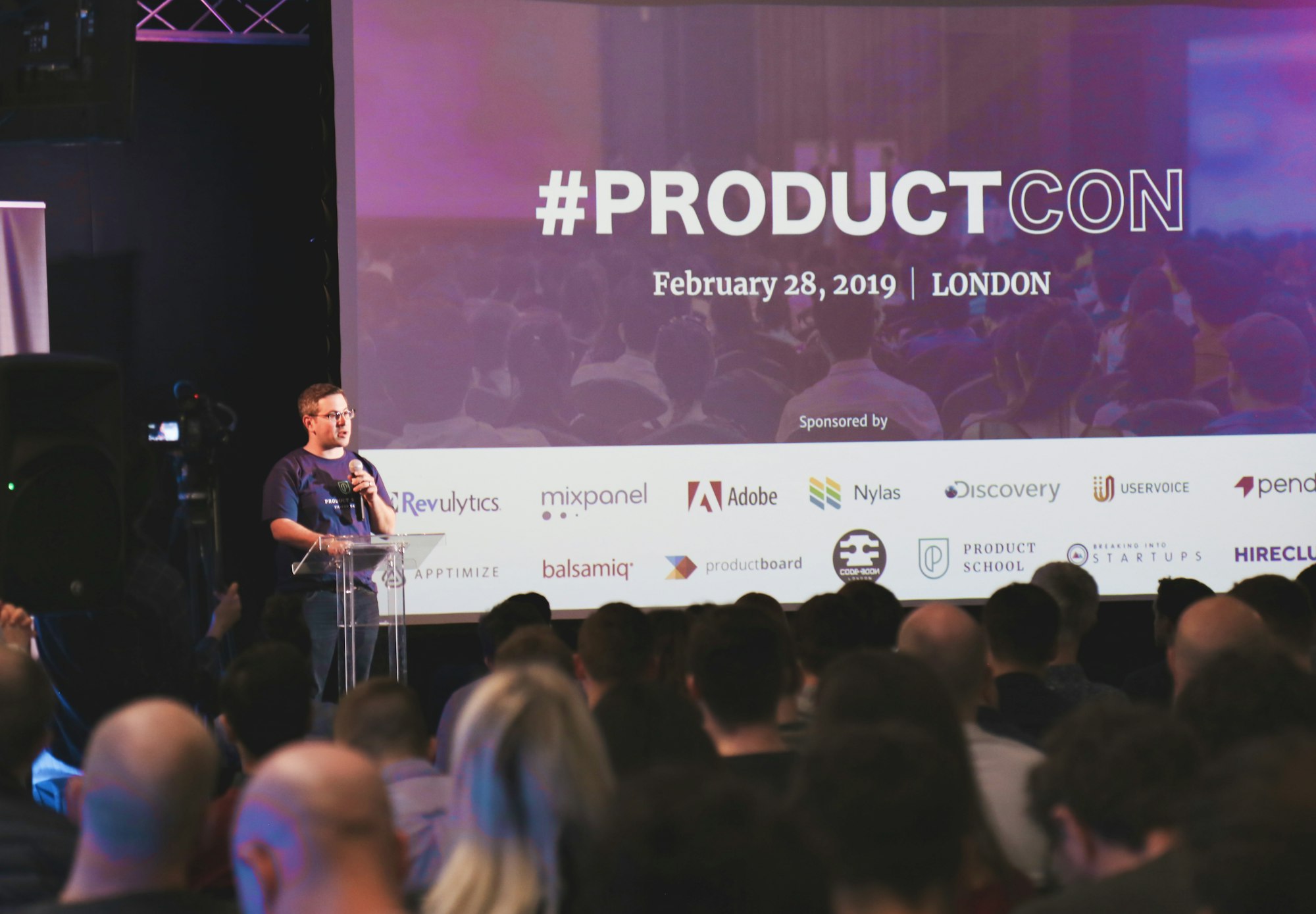Once you have your knowledge down pat and are respectful of your audience, it's time to work on the actual communication part of a technical presentation. In this post, we'll see many ways a speaker or presenter can communicate their ideas more effectively.
Intentional and Evocative
Everything speakers say in a technical talk should be intentional; there should never be the suggestion of "did he mean to say that?".

Being intentional is knowing what you are going to say, and deliberately choosing words that best describe what you mean. Talks require deliberation, and planning.
Note that intentional does not have to mean planned; you can say things that were not practiced but still add value, and that would still be intentional.
A large portion of being intentional, and possibly the most critical, is choosing what to say first. Whenever you show a new slide, switch examples, or generally change topics, the audience has an expectation that the first few things said or shown to them are the most important. We as speakers need to know and intentionally choose what we say in these occurances. When you change slides or examples, know the first two or three sentences that will come out of your mouth, and practice them.
In addition to being intentional, we as speakers want to use language that is evocative, that causes a feeling in our audience. For example, I have a talk about programming and time management while being a distracted developer. I needed a section of the talk to properly evoke what it feels like to have your mind so overflowing with random thoughts that you can't focus properly.

I started with this:
Ever feel like you just can't focus? I do, all the time. What's worse is that I cannot control it.
But that doesn't convey emotion; it tells the audience what it is like, but they don't actually experience it. After a lot of practice and revision, I changed it to this.
It's a burden, this mental weight I carry. It starts small: "where did I leave that note?" or "what was I supposed to get from the grocery store?" But then the guilt sets in. "I'm so stupid, I can't even remember a simple task." "Of course she's mad at me, I forgot something from the store so now I have to go back." "Of course my kids are upset, I didn't do that thing I promised to do." And it doesn't stop. With each small, trivial thing I forget, the negative thoughts swirl and tighten and squeeze and keep building and building and building and BUILDING until they become... insurmountable.
This is a lot more words, but far more evocative of the feelings I actually get when my ADHD causes me stress. This kind of language sticks with the audience, makes them feel a shadow of what I feel. You want your audience to feel along with you, and the language you use can make that happen.
A significant part of making your presentation intentional and evocative is your delivery; if you can present your talk with confidence, you can convince the audience that you know what you are talking about, and they will believe you. This confidence, in my experience, comes primarily from practicing the content until you're sick of doing so.
Practice, Practice, Practice
There is no substitute to practice. This is true for anything, not just technical speaking. Practice your talk repeatedly, ad nauseum, until you can do it in your sleep.

Practice at home, practice at work, practice in front of your peers, in front of your family, in front of your seven-year-old daughter's stuffed animal collection (yes, I really do this) and then listen to their comments. Practice until you can't screw up, then do it again.
There is no substitute for practicing your talk. Your audience will notice; practice gives you the "polish" on your topic, the shine on your knowledge, the cherry on your information sundae. Further, practice gives you the ability to change certain portions of your talk, to notice where the content isn't what you want it to be, and to make the presentation as a whole more useful, more insightful, generally better than it would be otherwise.
What I generally tell prospective speakers is that it takes 20 hours of research and practice to make a good one-hour talk. A good portion of that time is spent is removing whatever isn't actually necessary.
Delete Anything That Isn't Valuable to the Audience
Much of the work of making a talk intentional and evocative is practice, of course. A large part of the remaining work consists of eliminating what doesn't truly need to be said, things that do not impart any value to the audience.
"Perfection is achieved not when there is nothing more to add, but when there is nothing more to take away." - Antoine du Saint-Exupéry

A presentation of any kind is expected by the audience to be an demonstration of intentional communication; they know we aren't making this up as we go along. We as speakers owe it to them to not waste their time, and part of that eliminating words, sentences, or paragraphs that don't add anything useful to the conversation.
When you practice your talks, I urge you to record yourself and listen back to that recording sometime later (even if, as it is for me, it is painful to listen to yourself talk). This recording will expose the places where you say things that are not of value to the presentation, and once you know where those places are, you can work on either removing them entirely or replacing them with ideas, thoughts, comments, or examples that are actually of benefit to your attendees.
That recording might also prove useful for the next point: we should attempt to reduce or eliminate "filler" words in our presentations.
Reduce "Filler" Words
I guarantee that if you've been at enough conferences, you've encountered a speaker who did not work to eliminate filler words. These are words such as "um," "like," "so," and other which serve to fill pauses in the speaker's presentation, and they become quite noticeable when you are standing in front of a room of a hundred people.

In natural language and normal conversation, filler words crop up naturally to allow the speaker a bit of time to think and form a coherent response to an inquiry. But a technical presentation is not a normal conversation, and we should not treat it as such.
Part of respecting your audience is not wasting their time, and filler words do exactly that. Don't waste your audience's time! Recording yourself (as mentioned earlier) and listening back to it will help you notice when you personally tend to use filler words.
Summary
A large portion of making a technical talk worthwhile to the audience is our ability, as speakers, to communicate our ideas in a thoughtful and interesting way. This might mean using intentional or evocative language to impart a feeling to your audience, removing any topics or words that are not truly necessary, or just striving to reduce the number of times you say "um." You can use many of these methods to improve your own ability to communicate effectively.

In the next part of this series, we will discuss ways in which speakers can be approachable to their audiences, whether that's through asking and answering questions, maintaining a social media presence, or just having a place to show their work.

Happy Speaking!










